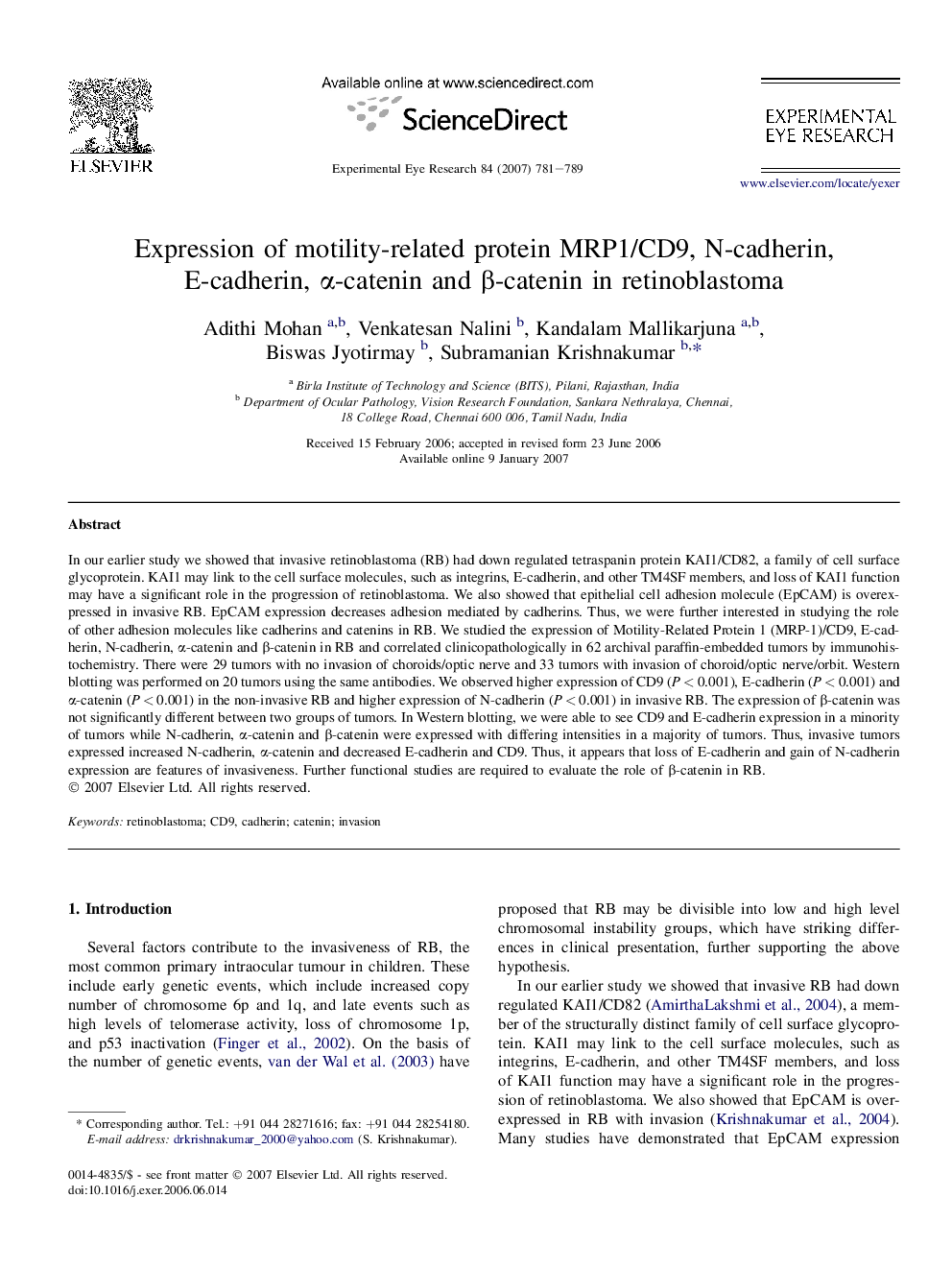| Article ID | Journal | Published Year | Pages | File Type |
|---|---|---|---|---|
| 4012360 | Experimental Eye Research | 2007 | 9 Pages |
In our earlier study we showed that invasive retinoblastoma (RB) had down regulated tetraspanin protein KAI1/CD82, a family of cell surface glycoprotein. KAI1 may link to the cell surface molecules, such as integrins, E-cadherin, and other TM4SF members, and loss of KAI1 function may have a significant role in the progression of retinoblastoma. We also showed that epithelial cell adhesion molecule (EpCAM) is overexpressed in invasive RB. EpCAM expression decreases adhesion mediated by cadherins. Thus, we were further interested in studying the role of other adhesion molecules like cadherins and catenins in RB. We studied the expression of Motility-Related Protein 1 (MRP-1)/CD9, E-cadherin, N-cadherin, α-catenin and β-catenin in RB and correlated clinicopathologically in 62 archival paraffin-embedded tumors by immunohistochemistry. There were 29 tumors with no invasion of choroids/optic nerve and 33 tumors with invasion of choroid/optic nerve/orbit. Western blotting was performed on 20 tumors using the same antibodies. We observed higher expression of CD9 (P < 0.001), E-cadherin (P < 0.001) and α-catenin (P < 0.001) in the non-invasive RB and higher expression of N-cadherin (P < 0.001) in invasive RB. The expression of β-catenin was not significantly different between two groups of tumors. In Western blotting, we were able to see CD9 and E-cadherin expression in a minority of tumors while N-cadherin, α-catenin and β-catenin were expressed with differing intensities in a majority of tumors. Thus, invasive tumors expressed increased N-cadherin, α-catenin and decreased E-cadherin and CD9. Thus, it appears that loss of E-cadherin and gain of N-cadherin expression are features of invasiveness. Further functional studies are required to evaluate the role of β-catenin in RB.
